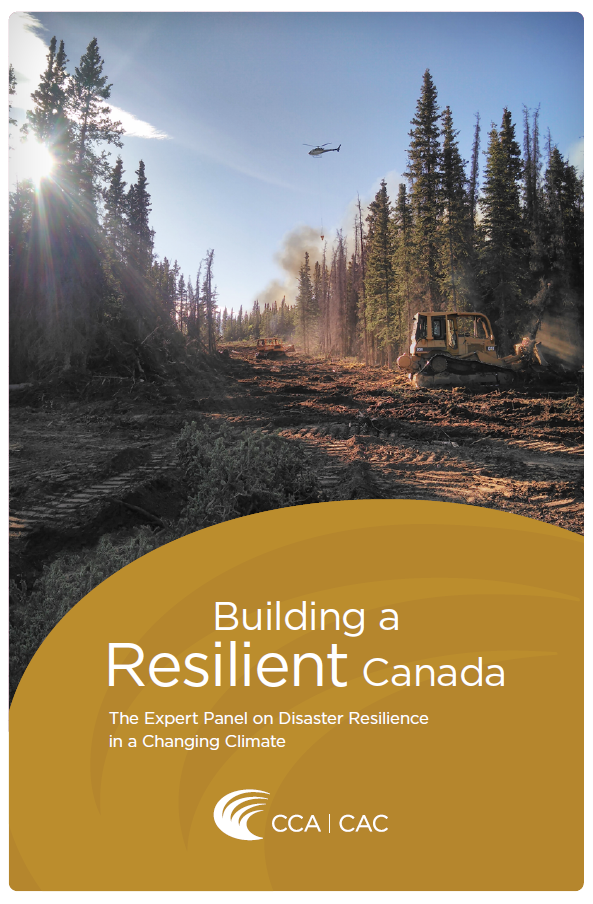Can closer integration with climate change adaptation improve disaster resilience in Canada?

 The short answer is yes. Climate-related disasters are on the rise in Canada, with climate change increasing the frequency and severity of natural hazards. Recent experience with ever-‘weirder’ weather across the country, has highlighted our lack of preparedness for future disasters. A new report titled Building a Resilient Canada, by the Council of Canadian Academies (CCA) identifies, through extensive research and advice from an Expert Panel, the necessary actions to take to reduce the vulnerability and exposure of communities, infrastructure, and sectors to natural hazards influenced by climate. ESSA’s Climate Change Adaptation Lead, Jimena Eyzaguirre, was part of the Expert Panel tasked with compiling this report. The Panel identifies that a key to building resilience in Canada is through the integration of climate change adaptation (adaptation) and disaster risk reduction (DRR). The two domains or practices often work in silos, but provide incredible opportunities to avoid or, at a minimum, reduce tangible and intangible losses and damages in the face of extreme events such as floods, storms and wildfires.
The short answer is yes. Climate-related disasters are on the rise in Canada, with climate change increasing the frequency and severity of natural hazards. Recent experience with ever-‘weirder’ weather across the country, has highlighted our lack of preparedness for future disasters. A new report titled Building a Resilient Canada, by the Council of Canadian Academies (CCA) identifies, through extensive research and advice from an Expert Panel, the necessary actions to take to reduce the vulnerability and exposure of communities, infrastructure, and sectors to natural hazards influenced by climate. ESSA’s Climate Change Adaptation Lead, Jimena Eyzaguirre, was part of the Expert Panel tasked with compiling this report. The Panel identifies that a key to building resilience in Canada is through the integration of climate change adaptation (adaptation) and disaster risk reduction (DRR). The two domains or practices often work in silos, but provide incredible opportunities to avoid or, at a minimum, reduce tangible and intangible losses and damages in the face of extreme events such as floods, storms and wildfires.
The report’s key findings are:
- An ongoing failure to fully integrate climate change adaptation into DRR activities, policies, and tools reduces the efficiency and impact of public investments in disaster resilience.
- Successfully integrating adaptation and DRR requires overcoming barriers such as disciplinary and departmental silos, conceptual and terminological differences, and jurisdictional misalignments while accounting for perceptions and cognitive biases that affect decision-making.
- The integration of adaptation and DRR requires a combination of I) Information systems adapted to the needs to decision-makers and II) flexible funding, financing, and insurance arrangements that support proactive investment.
- Whole-of-society collaboration as well as government mandates are necessary to operationalize integration
Although the report’s key findings are unlikely to surprise seasoned adaptation and DRR practitioners, the examples of promising approaches, gaps and opportunities for course correction merit a closer look. As an adaptation practitioner working across scales of governance, many of Jimena’s contributions to the Building a Resilient Canada Report focused on operationalizing integration. “I was curious to examine what was in place and what was needed for a ‘whole-of-society’ approach to building disaster resilience,” Jimena said. Supporting collaboration while maintaining clear lines of accountability, empowering local action, while keeping attuned to mismatches in scale between problems and solutions, and recognizing the limits of voluntary action are among the takeaways in chapter 6 of the report, Operationalizing Integration of DRR and Adaptation.
Elsewhere, the report highlights the implementation of nature-based solutions, like greening in cities to reduce urban heat islands and slow stormwater runoff, as promising options to manage disaster risk, although further evidence on their performance (in a changing climate) would cement their standing as part of the disaster-resilience toolbox.
Lastly, the report highlights issues of social equity and tackling the uneven exposure and vulnerability to risk as central to disaster resilience. Disasters are not natural and occur at the nexus of communities and natural hazards — now amplified by climate change. As a society we a have the choice: to choose disaster or choose resilience. Building a Resilient Canada highlights not only the gaps but opportunities for Canadians, from the individual to businesses to governments, to reduce the impacts of climate-related disasters. This report embodies ESSA’s mission: to bring together people, science, and analytical tools to sustain healthy ecosystems and human communities. By collectively making choices, and using tools and resources critical to an integrated response, Canadians can reduce the vulnerability of people, communities, and economy to climate-related disasters.
You can view the full report here